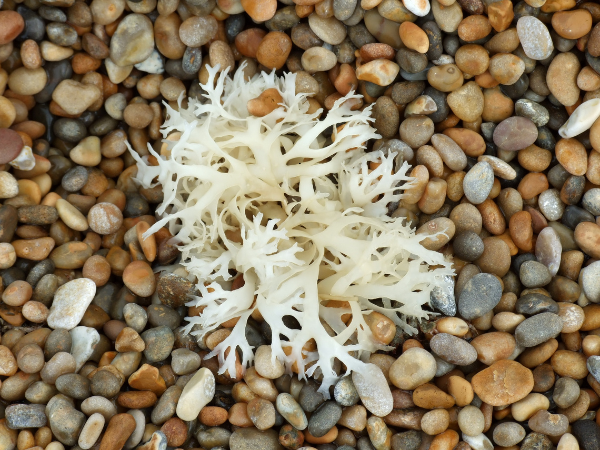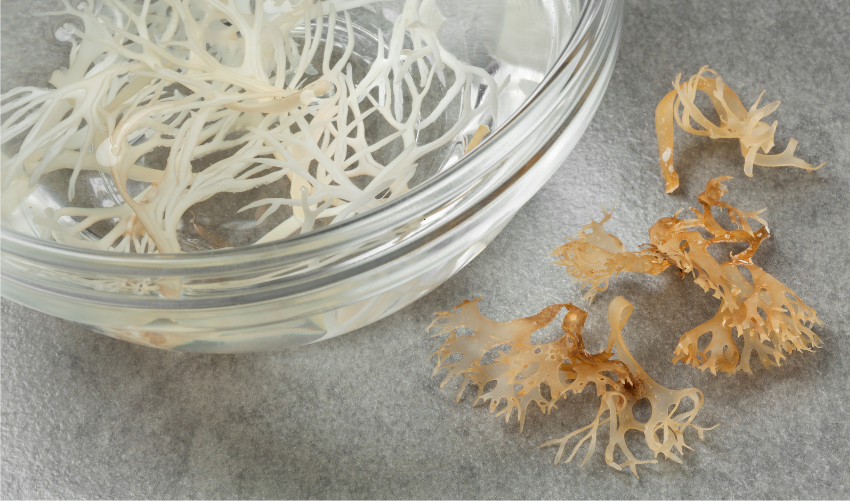Sea moss is packed with nutrients and can offer several health benefits, but it’s crucial to understand both the positives and the potential risks.
This guide we’ll explore the benefits it can provide, any risks you should be aware of, and practical dosage tips to ensure your kids can enjoy it safely.
Nutritional Benefits Of Sea Moss For Kids
Sea moss is rich in essential nutrients. It may offer valuable support for children’s growth and development. Let’s explore the nutritional benefits of sea moss for kids.
Key Vitamins And Minerals In Sea Moss
Sea moss is a powerhouse of nutrition. It contains several key vitamins and minerals that are crucial for children’s health. Here are some of the most notable nutrients found in sea moss:
- Rich in iodine: Essential for healthy thyroid function.
- Calcium and magnesium: Important for strong bones and teeth.
- Vitamins A, C, E: Support skin health and immune function.
- B-complex vitamins: Vital for energy production and brain function.
Including sea moss in a child’s diet can provide these essential nutrients. It may lead to improved overall health.
How Sea Moss Supports Child Development
Sea moss can play a vital role in child development. Its nutritional profile supports various aspects of growth.
- Supports immune health: Sea moss can help children fight off common illnesses.
- May aid digestion: It promotes gut health, which is crucial for nutrient absorption.
- Supports thyroid and brain function: Iodine and B vitamins are important for cognitive development.
- Can help boost energy: Sea moss may improve focus and energy levels naturally.
Including sea moss in meals can be simple. Mix it into smoothies, soups, or sauces. This makes it easy for kids to consume.
Potential Risks And Side Effects
While sea moss offers various benefits, it also has potential risks and side effects. Understanding these risks is essential for making informed decisions about your child’s diet.
Possible Allergic Reactions In Children
Allergic reactions to sea moss are possible, especially in children. Some kids may experience rashes or stomach upset after consuming it. Parents should be aware of the following:
- Symptoms of an allergic reaction include:
- Skin rashes
- Itching
- Stomach pain
- Nausea or vomiting
To ensure safety, introduce sea moss slowly and monitor for sensitivity. If any symptoms arise, stop using it immediately. It’s also important to avoid sea moss if your child is allergic to seaweed or iodine. Consult a pediatrician for guidance, especially if your child has existing allergies.
Overconsumption And Iodine Concerns
Overconsumption of sea moss can lead to iodine concerns. Sea moss is rich in iodine, which is essential for thyroid health. However, too much iodine can affect thyroid function. Here are some critical points to consider:
| Concern | Details |
|---|---|
| Thyroid Issues | Excess iodine can lead to hyperthyroidism or hypothyroidism. |
| Recommended Serving Size | Stick to age-appropriate serving sizes for children. |
| Consult a Pediatrician | Always consult a pediatrician before regular use. |
Keep track of how much sea moss your child consumes. It’s best to limit intake to avoid health issues. Make informed choices to ensure your child’s safety and health.

Proper Dosage And Usage Guidelines
Sea moss can provide essential vitamins and minerals. However, parents should be cautious. Knowing how much to give and the best ways to serve it can help ensure safety and effectiveness.
How Much Sea Moss Is Safe For Kids?
When considering sea moss for children, dosage is key. Start with 1/4 to 1/2 teaspoon of gel daily. This small amount allows the body to adjust to the supplement. It also helps to monitor for any adverse reactions. As children grow, you can adjust based on age and body weight. For example:
| Age Group | Daily Dosage (Gel) |
|---|---|
| 1-3 years | 1/4 teaspoon |
| 4-8 years | 1/2 teaspoon |
| 9-12 years | 1 teaspoon |
Always consult a healthcare professional before starting any new supplement. It ensures that sea moss is appropriate for your child’s specific health needs.
Best Ways To Give Sea Moss To Children
Introducing sea moss to children can be fun and easy. There are several ways to include it in their diet. Here are some effective methods:
- Smoothies: Blend sea moss gel into fruit smoothies. This hides the taste and adds nutrition.
- Soups: Add sea moss to soups or broths. It thickens the soup and provides health benefits.
- Snack Bars: Mix sea moss into homemade snack bars or energy bites. Kids love sweet snacks.
Make sure to start with 1/4 to 1/2 teaspoon of gel daily. As mentioned, adjust based on age and body weight. Keep an eye on how your child responds to the supplement. Encourage them to drink plenty of water.
Choosing The Right Type Of Sea Moss
This section will explore the differences between wildcrafted and pool-grown sea moss, as well as the forms that are safe for children.
Wildcrafted Vs. Pool-grown Sea Moss
Wildcrafted sea moss grows naturally in the ocean. It is harvested by hand from its natural habitat. This type contains more natural nutrients. It is rich in vitamins, minerals, and antioxidants. Wildcrafted sea moss is often preferred for its quality and nutrient density.
On the other hand, pool-grown sea moss is cultivated in controlled environments. These pools may not provide the same diverse nutrient profile. Pool-grown sea moss may lack essential trace minerals found in wildcrafted varieties.
When choosing between these two types, consider the following:
- Wildcrafted contains more natural nutrients.
- Pool-grown may lack essential trace minerals.
- Always check for reputable sourcing.
Here is a simple comparison:
| Feature | Wildcrafted Sea Moss | Pool-Grown Sea Moss |
|---|---|---|
| Nutrient Quality | High | Variable |
| Trace Minerals | Rich | Poor |
| Source | Natural | Controlled |
Parents should prioritize wildcrafted sea moss for their children. It offers better nutritional value and safety.
Forms Of Sea Moss Safe For Children
Sea moss is available in different forms. Each form has its benefits and suitability for children. Understanding these forms will help in making a safe choice.
The most common forms include:
- Gel: This form is easiest to mix into foods. It can be added to smoothies, soups, or desserts.
- Powder: Powders can be measured precisely for portion control. This allows parents to manage dosages effectively.
- Capsules: These are not recommended for young kids. They may pose a choking hazard.
Here are some dosage tips for sea moss:
- Start with small amounts, like half a teaspoon of gel.
- Gradually increase the dosage based on tolerance.
- Always consult a pediatrician before starting any new supplement.
Choosing the right form of sea moss ensures safety and effectiveness for children. Gel and powder forms are the best options.




Leave a Reply